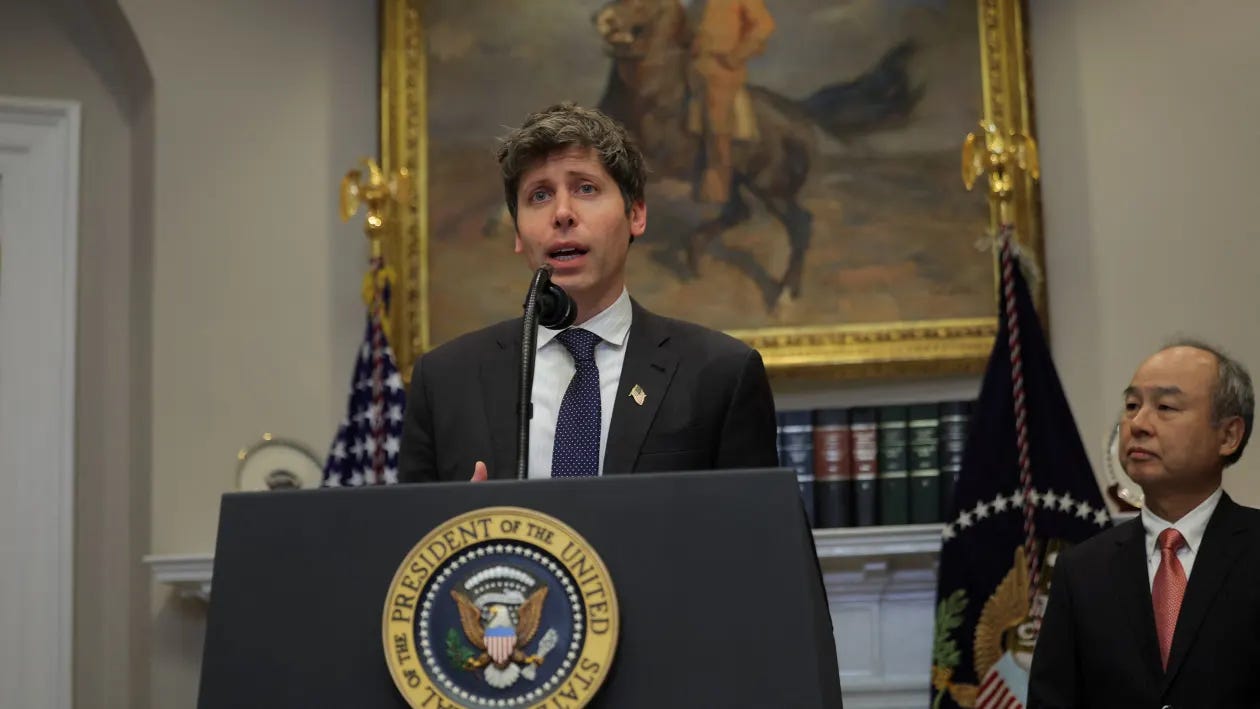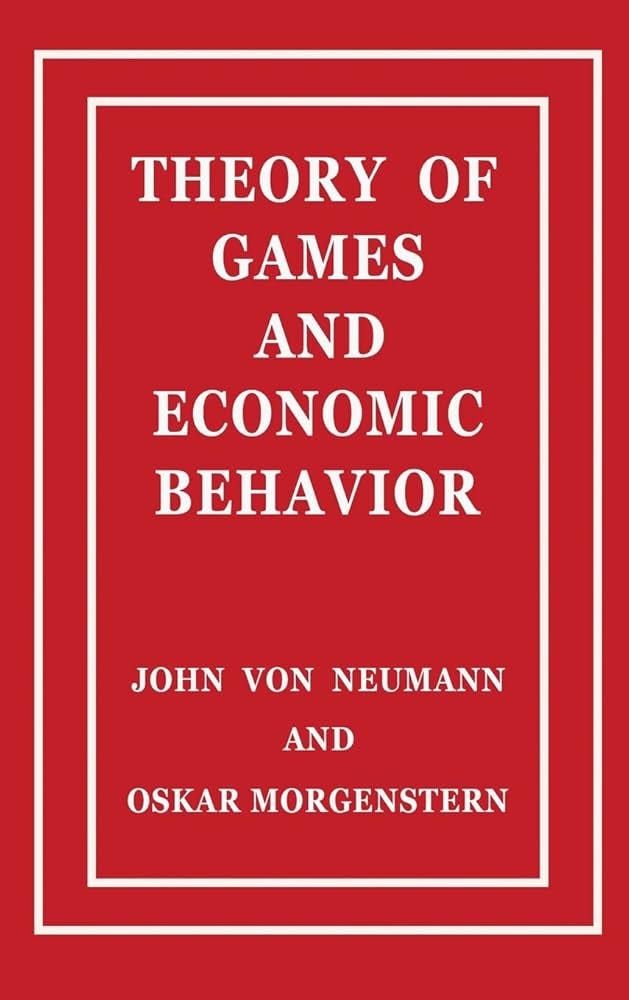Weekly Brief #64
Investor, say hello to DeepSeek... Plus, OpenAI raises cash at $300 billion, BoC cuts rates, U.S. Fed holds, Apple partners with SpaceX, U.S. sues to block HP-Juniper merger, and more.
Good morning investor 👋,
Welcome back to the 64th Weekly Brief.
This week’s performance:
S&P 500: -0.82% | Nasdaq: -1.84% | Dow Jones: +0.78% | TSX: +1.44% | Gold: +0.81% | Bitcoin: +1.37% | The Quality Fund: +1.93%.
A lot happened this week… including my announcement of a community Discord server—exclusively for The J. Nicholas subscribers! Here are the benefits and an overview: It will be an addition for the paid membership and will include some great added perks. Paid subscribers who join will receive an investment checklist and philosophy, early access to announcements like my eBook and future projects, and a place where we can all focus on a single goal: learning about high-quality stock investing and making money for the long term. The investment checklist and buy/sell PDFs will be created in the coming weeks.
What I’m most excited about, though, is that every Discord member will get access to a quarterly report written by yours truly, outlining the current market conditions from my perspective, along with my thoughts on The Quality Fund (my portfolio). For paid subscribers, you’ll get access to exclusive channels, including early access to my newsletter drafts (those I don’t post) and exclusive thoughts and write-ups on earnings reports from companies in my portfolio.
As more of you join, I will continue refining it. (This will replace Substack Chat, and all my trade announcements will be posted in the Discord firsthand—this is included with all the other paid benefits.) If this sounds like something you’d love to be part of, here’s the link to join (future Jacob: link is expired, upgrade to paid or email me for a new link if already a paid susbcriber).
Let’s get into it. (11 min read)
In this issue:
👾 Investor, say hello to DeepSeek
🇨🇦 BoC cuts rates, U.S. Fed holds
🇺🇸 U.S. confirms 25% Canada-Mexico tariff
FEATURED STORY

👾 Investor, say hello to DeepSeek
This week was supposed to be a volatile week. That was expected. We had the Federal Reserve FOMC meeting (interest rate decision), and many Magnificent 7 companies reporting earnings. It did end up being a volatile week after all, but not for any of those listed reasons.
Instead, what dominated sentiment this week was DeepSeek.
Yes, I budged. I’m joining the “write about DeepSeek” train.
The DeepSeek situation
DeepSeek is a Chinese AI model released this week, announced as a 98% cheaper but on-par (and sometimes faster and more efficient) alternative to the newest ChatGPT model. (All American models, for that matter.) DeepSeek said that for this performance, it cost them just under $6 million to train using a lower-performing Nvidia H800 chipset. There are even rumours that DeepSeek was trained on data from ChatGPT queries.
It was unheard of. “What a massive leap in efficiency!” investors screamed. It completely blew up the U.S. market, wiping out over $1 trillion in value until briefly recovering shortly after.
America has placed massive export restrictions on high-performance chips to China, which include the newer Nvidia H100 chips that power ChatGPT and all the newer American models that lead the way for American dominance in AI. Or so it seemed. A lower-performing chipset, used to train a Chinese model at fractions of a fraction of the cost of these American models, being marketed as an on-par performing alternative at a lower cost to the consumer than these powerful American models, is a huge threat. The kicker? It’s also completely open-source (meaning anyone can use the model, download it, edit it, etc., without consequences—unlike OpenAI and the American counterparts, which are all closed-source). And so, it destroyed the American tech sector for a day. It rose to be #1 in the Apple App Store (category: productivity), passing ChatGPT, Claude, and Gemini. As I write this, it still holds that spot.
That being said, there’s a very high chance here that DeepSeek is lying. So let’s give ourselves a brain jab quickly and get back to that point about Nvidia GPUs. How can an AI model, for $6 million and with low-performing processors, become on par with the best-performing, more expensive alternatives?
Well, let’s see.
How about… it plausibly can’t?
Nvidia did issue a response to this situation, and we’ll get to that, but I want to first share the thoughts of Elon Musk and ScaleAI CEO Alexandr Wang, who both have indirectly and upfront agreed that DeepSeek has close to (plus or minus) 50,000 H100 chips for their newest model. Thousand. At the minimum:
1“The Chinese labs have more H100s than people think. My understanding is that DeepSeek has about 50,000 H100s. Which they can’t talk about, obviously, because it is against the export controls that the U.S. has put in place. They have more chips than people expect, but on a go-forward basis, they are going to be limited by the chip controls and the export controls we [America] have in place.” — ScaleAI CEO Alexandr Wang
(Elon Musk reposted this on X, agreeing with it.)
These are chips DeepSeek cannot afford to say they have because of the restrictions on US chip exports. That would mean they obtained these chips illegally. Many rumours are saying the 20%+ total revenue percentage of Nvidia that comes from Singapore is actually just being smuggled into China from Singapore to avoid restrictions. This wouldn’t be unusual—we saw (are seeing) this happen with I do believe Kazakhstan and Russia because of the sanctions imposed from the Ukraine conflict.
However, what this means is—if the rumours here are true—there’s zero way this model was made for less than $1.5 billion ($30,000 per chip). At the very minimum. And Nvidia agrees. Here’s their official response:
“DeepSeek is an excellent AI advancement and a perfect example of Test Time Scaling. DeepSeek’s work illustrates how new models can be created using that technique, leveraging widely available models and compute that is fully export-control compliant. Inference [aka the physical infrastructure to power GenAI models] requires significant numbers of NVIDIA GPUs and high-performance networking…”
“Requires significant numbers of NVIDIA GPUs and high-performance networking.” In other words, it costs a lot of darn dollars to train and run an AI model at this high level of performance. Making this model for under $6 million just doesn’t seem plausible in that case. It’s theoretically impossible. Not to say China doesn’t have incredibly smart people advancing technology at this level—they actually have some of the smartest—but that would be an incredible feat if done with such underperforming chips compared to the American counterparts. What would be the point of these $60-80 billion AI spending targets from big tech if that were the case?
Now, how did DeepSeek get the money to buy these illegal chips, and what’s the point of lying about the cost to train? Other than, of course, avoiding admitting to a national crime? We currently know the Chinese government has been giving large subsidies to technology companies in China, and this is possibly a product of those subsidies. But the actual scenario is that the owner of DeepSeek, which is a Chinese hedge fund called High-Flyer, funded that chip buying. There’s even a chance (although I have no evidence) that High-Flyer lied about the $6 million cost for DeepSeek so they could short the U.S. stock market and reap the benefits when investors sold out. (It is a hedge fund, so it’s definitely a possibility. American hedge funds do the same.) The brief market sell-off we had from this news, was an overreaction.
Like Alexandr Wang said above, because of this chip dependence for running such complex models—like Nvidia mentioned—and the restrictions in place by America, DeepSeek will have large troubles keeping up with advancements going forward with American companies. We recently had OpenAI announcing a 100,000-chip data centre using the newer Nvidia GB200 chips (in partnership with Oracle and Microsoft), so right on that basis, if it starts being used soon, OpenAI is ahead in 2025. (GB200 chips are 6x more powerful than H100s.) DeepSeek doesn’t have easy access to those same chips. And probably won’t—if any—for months down the line. I’m not one to underestimate China, but I’m also not one to lose trust in the technological advancement of American tech over the release of one single Chinese model at the start of the year.
We’ll see how this evolves; 2025 is already a big year for AI, and I’m excited for it. It’s still only January.
FINANCE

a. 💰 OpenAI raises cash at $300 billion
Speaking of OpenAI, the company is now reportedly in discussions to raise an extra $40 billion in funding, led primarily by SoftBank which plans to invest between $15 billion and $25 billion itself, according to The Wall Street Journal.
This capital would raise the value of OpenAI to a massive $300 billion—very close to doubling the $157 billion valuation back in October 2024. The company plans to use this capital to cover its losses and fund Stargate (link to my post on Stargate below). OpenAI generated $3.7 billion in revenue in 2024, and supposedly lost around $5 billion. Losses are expected to grow as it ramps up investments in AI infrastructure.
Related articles:
b. 🇨🇦 BoC cuts rates, U.S. Fed holds
Canada: The Bank of Canada (BoC) lowered interest rates again this week, for the sixth consecutive time, announcing a 25-basis point cut (0.25%) as the bank forecasts stronger GDP growth in 2025 and stable inflation. That is, if a trade war with the U.S. is avoided. Tariffs were not factored into the rate decision, according to BoC Governor Tiff Macklem.
United States: The U.S. Federal Reserve kept its benchmark rate unchanged this Wednesday, a U-turn following the three consecutive cuts last year. The Fed had previously lowered rates due to concerns over a weakening job market, but job growth rebounded, and unemployment fell soon after, making rate cuts now less likely. Fed Chair Jerome Powell said inflation is still “uncertain,” in part due to uncertainty around Trump’s policies.
BUSINESS

c. 🤝 Apple partners with SpaceX
Apple, Elon Musk’s SpaceX via Starlink, and T-Mobile are partnering to bring premier satellite support for iPhones, says Bloomberg. The service will offer T-Mobile users an alternative to Apple’s Globalstar-powered Emergency SOS (a satellite company it owns 20% of), which would allow satellite texting without pointing the phone at the sky.
In Apple’s recent update, iOS 18.3, they quietly introduced support for this feature, but Apple has yet to confirm it to be true. Elon Musk has very discreetly hinted at adding capabilities for images, music, and podcasts with the partnership, and even future upgrades that support video. For now, this service is U.S.-only. Globalstar is available internationally.
Related articles:
d. 🧑⚖️ U.S. sues to block HP-Juniper merger
The Justice Department sued to block Hewlett Packard Enterprise’s (HPE) $14 billion acquisition of Juniper Networks on Thursday, kicking off the first antitrust challenge under the new Trump administration. The DOJ is alleging that HPE was facing immense competition from Juniper and resorted to price cuts and innovation. But when that didn’t work, it decided to buy its rival.
The lawsuit says the merger would “stifle competition, raise prices, and limit innovation.” HPE and Juniper issued a statement rejecting the lawsuit. They believe it wouldn’t hurt, but actually enhance competition. HPE and Juniper are the second and third-largest U.S. WLAN (wireless computer network) providers respectively. Cisco is the leader. If approved, the merger would lead to a 70% consolidation of the market in the top two companies. (Trump is supposed to be the more merger-friendly administration. I’m interested to see how this plays out.)
POLITICS

e. 🇺🇸 U.S. confirms 25% Canada-Mexico tariff
U.S. President Donald Trump confirmed on Thursday that he is planning for his administration to go ahead with the 25% tariffs on Mexico and Canada this Saturday, and that he would soon decide whether to exempt Canadian and Mexican oil from the tariff. Trump set the tariff deadline last week, and for over a month, he’s been threatening the same tariffs to pressure Mexico and Canada to stop illegal migration and fentanyl from entering the U.S.
I’ve written about the effects this tariff would have on Canada if it were to go through in a previous issue. And just this week, the Bank of Canada released a report saying a 25% tariff between Canada and the U.S. could shrink Canada’s GDP by 4% in two years—a highly likely recession. Tariffs would worsen Canada’s trade balance, weaken the Canadian dollar (more than it already is, if you believe that), and push inflation to the skies. It would be tough. Hopefully, it doesn’t go through, or if it does, hopefully not for a long period.
Related articles:
📚 Book of the Week
For every book purchased using the links below, 100% of affiliate commissions are donated to charity. (Amount donated so far: $34.32.)
My full bookshelf: Here.
Theory of Games and Economic Behaviour - John Von Neumann, Oskar Morgenstern
Book Description:
John von Neumann and Oskar Morgenstern conceived a groundbreaking mathematical theory of economic and social organization, based on a theory of games of strategy. Not only would this revolutionize economics, but the entirely new field of scientific inquiry it yielded—game theory—has since been widely used to analyze a host of real-world phenomena from arms races to optimal policy choices of presidential candidates, from vaccination policy to major league baseball salary negotiations.
And it is today established throughout both the social sciences and a wide range of other sciences.
Thanks for reading. Feel free to reply to this email or comment on the web if you need anything—I always reply. If you enjoyed today’s issue, feel free to share it with friends and family.
All the best,
Jacob
All my links here.
Serious about investing? My best work is members-only. Don’t miss out on exclusive insights and benefits—upgrade today.
Source of passage is from an interview by CNBC.





